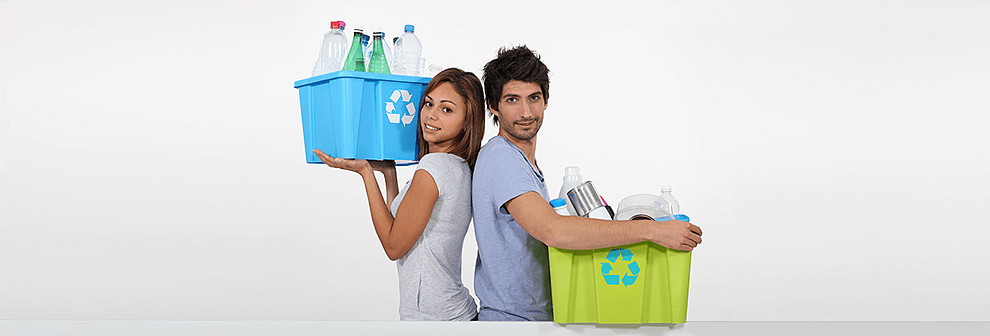Positive Aspects of Recycling Polystyrene
Posted on 19/08/2025
Polystyrene, a versatile plastic used in a variety of applications from packaging materials to disposable cutlery, has garnered both positive and negative attention over the years. On one hand, it is appreciated for its durability, lightweight nature, and insulating properties. On the other hand, it has been criticized for its environmental impact. However, recycling polystyrene presents numerous positive aspects that can mitigate its drawbacks. This article will delve into the environmental, economic, and societal benefits of recycling this ubiquitous material.
Environmental Benefits
Among the most significant advantages of recycling polystyrene is the immense positive impact on the environment. When properly recycled, polystyrene can reduce landfill overflow, lower greenhouse gas emissions, and conserve natural resources.
Reduction in Landfill Waste
Polystyrene is notorious for occupying a considerable amount of space in landfills due to its bulk and non-degradable nature. By recycling this material, we can significantly reduce landfill overflow. This not only minimizes the physical footprint of waste but also decreases the risk of contaminating soil and water sources. Landfill reduction helps municipalities save money on waste management and reduces the frequency of establishing new landfill sites.
Lower Greenhouse Gas Emissions
Another considerable environmental benefit of recycling polystyrene is the reduction in greenhouse gas emissions. Manufacturing new polystyrene involves energy-intensive processes that contribute to carbon dioxide and other harmful emissions. Recycling polystyrene consumes considerably less energy compared to producing new products from raw materials, resulting in fewer emissions. As a result, recycling helps in the fight against climate change by lowering our carbon footprint.
Conservation of Natural Resources
Recycling polystyrene preserves valuable natural resources like petroleum, which is a primary raw material used in the production of polystyrene. By reusing existing polystyrene, we can reduce our reliance on this finite resource. Moreover, the recycling process itself can often utilize less water and energy compared to the extraction and refining processes needed to produce new polystyrene. This conservation extends the lifespan of our natural resources and promotes a more sustainable approach to material usage.

Economic Benefits
Recycling polystyrene isn't just good for the environment; it also has substantial economic advantages. These benefits range from job creation to cost savings for businesses and municipalities.
Job Creation
The recycling industry is a significant source of employment. Recycling polystyrene generates various jobs in collection, transportation, processing, and reselling the recycled materials. As more businesses and municipalities adopt recycling practices, the demand for skilled workers in this sector is likely to grow. This job creation extends across diverse roles, from engineers and technicians to transportation workers and sales professionals.
Cost Savings
For businesses, recycling polystyrene can translate into significant cost savings. Companies that recycle their polystyrene waste often receive financial incentives or subsidies from government entities, reducing their operational costs. Additionally, recycled polystyrene can be utilized in manufacturing new products, lowering the material costs for businesses that produce packaging and other items. For municipalities, less waste in landfills means reduced expenditures on waste management and landfill operation and maintenance.
Growth of Circular Economy
Recycling polystyrene bolsters the circular economy. In a circular economy, materials are continually reused, and waste is minimized. As a result, industries that focus on recycling rather than simple disposal can thrive. The recycled polystyrene market benefits from increased demand for sustainable products, which encourages businesses to innovate and create better recycling technologies. This growth translates to increased economic activity and sustainability, fostering a greener future.
Societal Benefits
The advantages of recycling polystyrene extend into societal realms as well, positively impacting human health, public awareness, and community well-being.
Improved Public Health
One of the most significant societal benefits of recycling polystyrene is the improvement in public health. Landfills are known to emit harmful gases and leach toxins into surrounding environments. By reducing the amount of polystyrene in landfills, we decrease the release of these hazardous substances, leading to cleaner air and water. Consequently, communities near landfills experience fewer health risks, such as respiratory problems and waterborne diseases.
Increased Public Awareness
Promoting the recycling of polystyrene helps raise public awareness about the importance of waste management and environmental conservation. Education campaigns and recycling programs can instill a sense of responsibility and environmental stewardship in individuals. Community-driven efforts to recycle polystyrene can inspire other eco-friendly practices, contributing to a culture of sustainability.
Strengthening Community Bonds
Community-based recycling programs for polystyrene can enhance community bonds. When neighbors collaborate on recycling initiatives, they create a shared sense of purpose and responsibility. Many communities organize events like recycling drives and educational workshops, fostering social interaction and collective action. These activities not only improve recycling rates but also strengthen community ties and create a more resilient and cooperative society.

Challenges and Solutions
While the positive aspects of recycling polystyrene are evident, it is important to acknowledge the challenges that exist and explore viable solutions to overcome them.
Collection and Sorting
One of the primary challenges in recycling polystyrene is the collection and sorting process. Polystyrene is often found in small, lightweight pieces that can be difficult to gather efficiently. However, advances in technology and the implementation of specialized collection systems can address this issue. For instance, community drop-off points and partnerships with businesses can streamline the collection process, making it easier for consumers to participate in recycling programs.
Contamination
Contaminants in polystyrene recycling streams, such as food residue and other non-recyclable materials, can hinder the recycling process. Education and awareness campaigns can significantly mitigate this issue by informing the public about proper recycling practices. Furthermore, improved sorting technologies and cleaning methods can ensure that the recycled polystyrene is of high quality and free from contaminants.
Economic Viability
At times, the economic viability of recycling polystyrene can be a concern, particularly in areas with limited access to recycling facilities. Investing in local recycling infrastructure and providing financial incentives to support recycling programs can enhance the economic viability of these initiatives. Governments and businesses can work together to create a supportive framework that encourages sustainable recycling practices.
Conclusion
Recycling polystyrene offers a multitude of positive aspects that benefit the environment, economy, and society at large. By reducing landfill waste, lowering greenhouse gas emissions, and conserving natural resources, recycling polystyrene contributes to a more sustainable planet. Economically, it generates jobs, saves costs, and promotes the growth of the circular economy. Societally, it improves public health, raises awareness, and strengthens community bonds. While challenges exist, they can be effectively addressed through innovative solutions and collaborative efforts. Embracing the recycling of polystyrene is a crucial step towards a greener and more sustainable future.
















